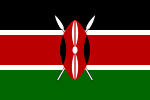Kunta people
Appearance
This article needs additional citations for verification. (November 2017) |
This article includes a list of references, related reading, or external links, but its sources remain unclear because it lacks inline citations. (November 2017) |
| Total population | |
|---|---|
| 50,000 Kenya | |
| Regions with significant populations | |
| Mfangano, Rusinga/Gembe and Muhuru Bay in Western Kenya | |
| Languages | |
| Dholuo, Olukunta, Swahili, and English | |
| Religion | |
| Christianity, African Traditional Religion | |
| Related ethnic groups | |
| Ganda, Soga, Luhya, other Bantu peoples |
| Part of a series on the |
| Culture of Kenya |
|---|
 |
| Cuisine |
The Kunta people (also known as Abakunta or Abasuba) Bantu community living on the eastern shores of Lake Victoria in South Nyanza, Kenya, in the Ngodhe area in Gembe locality and Muhuru Bay area, and the nearby islands, such as Mfangano, Ringiti, Takawiri, Elemba and Rusinga. The Abakunta have been overlooked in both colonial and independent Kenya. The Kenyan government today take them to be Suba people.
References
[edit]There are scanty sources as the Abakunta are transforming themselves to Abasuba:
- Okoth-Okombo, Duncan (1999) 'Language and ethnic identity: the case of the Abasuba', Kenya Journal of Sciences (Series C, Humanities and Social Sciences) 5, 1, 21-38.
- Heine, Bernd & Brenzinger, Mathias (eds.) (2003) 'Africa', in UNESCO Red Book of Endangered Languages . (Suba entry )
